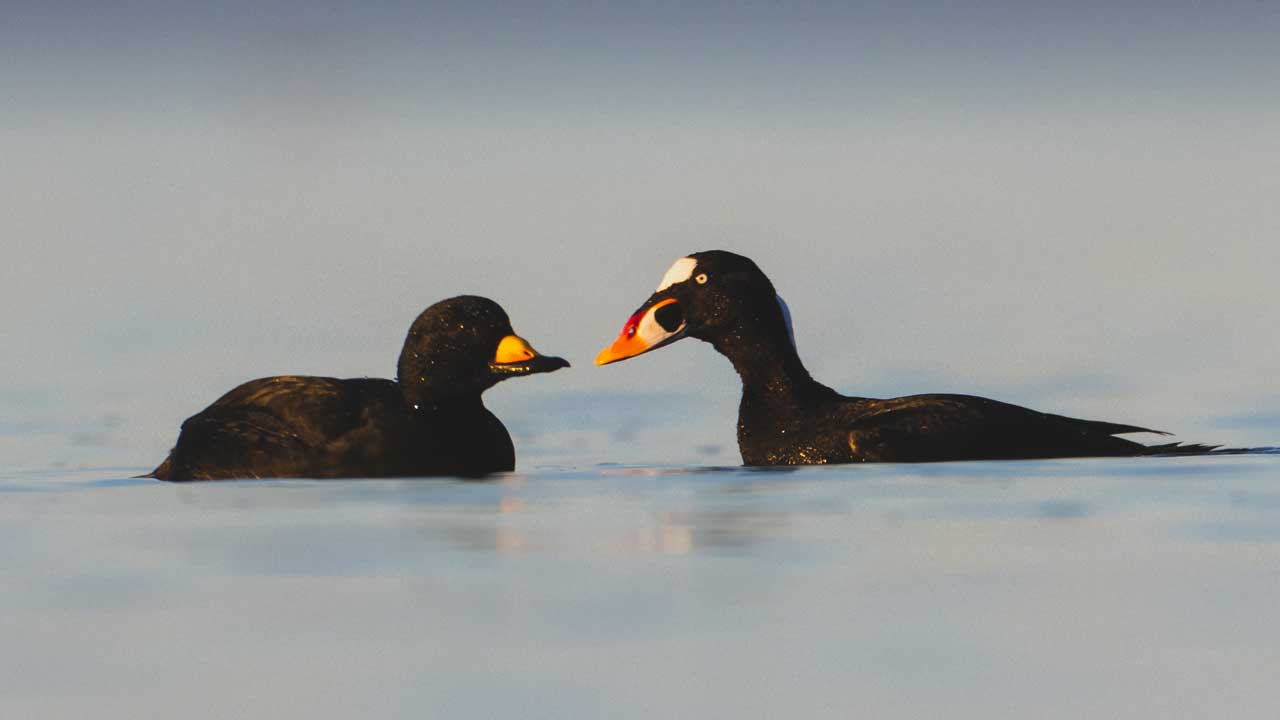Lead Institution(s): USGS Patuxent Wildlife Research Center
Project Lead: Matthew Perry
Collaborator(s): USFWS, CWS
Focal Species: Black Scoter (Melanitta americana), Surf Scoter (Melanitta perspicillata)
Project Description: The migration pathways and critical habitats used by seaducks in the Atlantic Flyway need further research. The goal of this study was to determine the current distribution of surf and black scoters on their breeding and molting areas using satellite telemetry. Delineating these populations and establishing the affinities among wintering, staging, breeding, and molting grounds will assist in future population monitoring and management. Specific project objectives were: 1) Determine migration route and breeding ground of surf scoters, when they leave Chesapeake Bay in the late-winter, and black scoters, when they leave Restigouche River in June; 2) Conduct habitat analyses using detailed maps to provide data on the hydrology and geomorphology of these remote scoter breeding areas and the important biotic and abiotic factors influencing nest site selection; and, 3) Conduct habitat analyses of staging, molting and wintering habitats of black and surf scoters, based on satellite telemetry coordinates.
SDJV04 Interim Report FY02
SDJV04 Interim Report FY03
SDJV04 Interim Report FY04
SDJV04 Final Report FY05
Related Projects and Publications
Atlantic and Great Lakes Sea Duck Migration Study (SDJV 130)
Perry, M. C., D. M. Kidwell, A. M. Wells, E. J. R. Lohnes, P. C. Osenton and S. H. Altmann. 2006. Characterization of breeding habitats for black and surf scoters in the eastern boreal forest and subarctic regions of Canada. Pp. 80–89 in Hanson, A., J. Kerekes and J. Paquet. 2006. Limnology and Aquatic Birds: Abstracts and Selected Papers from the Fourth Conference of the Societas Internationalis Limnologiae (SIL) Aquatic Birds Working Group. Canadian Wildlife Service Technical Report Series No. 474 Atlantic Region. xii + 203 pp.
